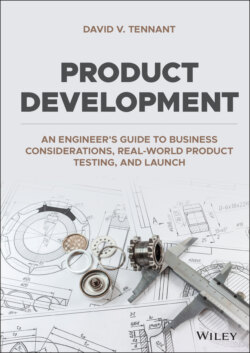Читать книгу Product Development - David V. Tennant - Страница 22
Discussion Case 2.2 (Refer to Table 2.2)
ОглавлениеYour marketing team has performed the following analysis. The new product is a portable external battery device that can power your laptop computer for up to one full day. The unit can be charged using regular home electric current or using the sun (solar power) in about one hour. This device is smaller than competing devices (a little larger than a flash drive) and more versatile. The target market is college students, nationwide. The new product has been designed to be trendy, easy to use, and reasonably priced. There are approximately 19.6 million college students in the USA.
We will assume that 10% of the total number of students will purchase the product and that the average cost will be $50. Note that the margin (profit) declines per unit as price declines. Discussion questions for Case 2.1:
1 What are the advantages and disadvantages of this kind of modeling?
2 Why do you think margins per unit decline as the price drops?
3 Looking at the sale prices compared to margins (%), is $50 the best price? How do you know students will pay this amount for your product?
4 If 10% of students purchase your product the best-case scenario shows $98 million in revenue and profits of $24.5 million. The worst case is a profit margin of $11.662 million. In your opinion, are these numbers realistic?
5 Do you think you will have competitors prior to reaching the maturity stage?
6 Is this type of analysis realistic?
7 What role would the engineering or R&D group play in this evaluation?
8 The chart above shows gross revenues and net profits. There is no mention of the cost of the product. What are some of the costs that would be involved? Can you determine from the chart above the total “costs” of the product?
